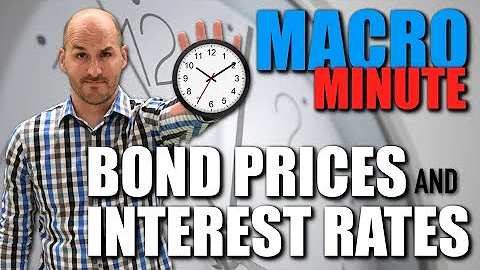The yield on the 10-year U.S. bond is approaching 3%, and the yield on the 30-year U.S. bond has exceeded 3%. Under this situation, the global exchange rate has experienced large fluctuations, and the RMB exchange rate has fallen below the 6.4 mark.
What is the reason for the rapid rise in U.S. bond yields? To what level might it rise? What about the impact?
htmlThe 210-year U.S. bond yield is approaching 3%
htmlOn April 19, the 10-year U.S. bond yield exceeded 2.9%, reporting at 2.93%. As of 16:00 on April 20, the 10-year U.S. bond yield remained above 2.9%, reaching a maximum of 2.98%, a new high since 2019, and only "one step away" from breaking through 3%.
Source: Yingwei Finance
The 30-year U.S. bond yield has risen above 3%. As of 16:00 on the 20th, it reached a maximum of 3.032%, a new high since April 2019.
In addition, the U.S. dollar index has broken the 100 mark for 8 consecutive trading days. As of 16:00 on the 20th, it rose to a maximum of 101.04, a new high since April 2020.
U.S. dollar index trend chart

Source: Wind
The U.S. dollar index remains high, and the 10-year U.S. bond yield exceeds 2.9% and approaches 3%, bringing volatility to the global exchange rate market.
On the 20th local time, the exchange rate of the Japanese yen against the US dollar once fell below the 129 yen mark for 1 US dollar, setting a new low since May 2002.
The RMB exchange rate also retreated further. On April 20, the onshore RMB exchange rate against the US dollar fell sharply by nearly 300 points at the opening, falling below the three levels of 6.38, 6.39, and 6.40, and reported at 6.4055, the first time since December last year. The offshore RMB exchange rate against the U.S. dollar also fell sharply at the opening, once approaching the 6.44 mark, a new phased low since October last year. On the same day, the central parity rate of the RMB against the US dollar dropped by 276 basis points from the previous trading day to 6.3996.
As of 16:00, the onshore and offshore RMB exchange rates against the US dollar were reported at 6.4151 and 6.4415 respectively.
USD/CNY trend

Source: Wind
Inflation expectations and interest rate hike expectations
Pushing up U.S. bond yields
html The rapid rise in 010-year U.S. bond yields has been analyzed by many institutions as being related to high U.S. inflation expectations and strong interest rate hike expectations.In terms of inflation expectations, after the outbreak of the Russia-Ukraine conflict, international energy and food prices rose sharply, and US inflation indicators and inflation expectations subsequently heated up. Data show that U.S. CPI rose 8.5% year-on-year in March, hitting a 40-year high. “From late February to early March, the implied inflation expectation for the 10-year TIPS Treasury bonds surged by 50BP to 2.9%; after early March as of mid-April, the inflation expectation still remained high and fluctuated between 2.8% and 2.95% (and (has not fallen back due to the rise in real interest rates)." said Zhong Zhengsheng, chief economist of Ping An Securities.
In terms of expectations for interest rate hikes, the minutes of the Federal Reserve's latest interest rate meeting showed that the Federal Reserve may start shrinking its balance sheet as early as May, and many Federal Reserve officials are inclined to raise interest rates by 50bp one or more times. Zhong Zhengsheng said that the market expects the pace of interest rate hikes to accelerate during the year, the "upper limit" of this round of interest rate hikes is uncertain, and drastic changes in currency expectations have led to a sharp reaction in real interest rates.
Li Chao, a macro analyst at Zheshang Securities, also believes: “On the one hand, CPI has not yet peaked in the short term, and inflation expectations still have room to rise; on the other hand, with tightening expectations still having room to increase, U.S. bond yields are expected to still rise. Space."
Institutions expect the impact to be limited
Many institutions predict that this round of rising 10-year U.S. bond yields may peak in May, reaching a maximum of 3.1%.
html What is the impact of the rise in 010-year U.S. bond yields?In terms of exchange rate, many institutional people believe that the U.S. bond yield is approaching 3%, which may put pressure on the RMB in the short term. The RMB exchange rate will undergo a periodic correction, but the probability of sustained unilateral depreciation is unlikely. Zhang Jiqiang, chief fixed income analyst at Huatai Securities, analyzed that under the circumstances of strong external demand and weak domestic demand, the expansion of the trade surplus has led to an increase in foreign exchange inflows, hedging against the depreciation pressure of the RMB; U.S. bond yields have increased, but the actual situation between China and the United States after taking into account inflation The interest rate spread is still wide, which will also support the RMB exchange rate.
"It is expected that the flexibility of the RMB exchange rate will further increase." Ming Ming, co-chief economist of CITIC Securities, said.
In terms of foreign capital inflows, institutional insiders predict that although the pressure of foreign capital outflows from the bond market will still remain, the actual interest rate spread is still at a relatively high level, and the RMB exchange rate is also at a high level. The impact on this round of cross-border capital flows is expected to be controllable.
In terms of the bond market, Mingming analyzed that compared with the impact of rising U.S. bond yields, the main contradiction in the trend of domestic bond market interest rates lies in the country. The current economic fundamentals are declining and monetary policy is loose. It is expected that 2.85% will still be 10-year Treasury bonds. At the top of yields, interest rates still have room to fall.
In addition, the current round of 10-year U.S. bond yields has a limited rise. Zhong Zhengsheng analyzed: "In the second half of the year, as the Fed's tightening cycle enters the middle stage, the pace of monetary policy tightening may 'change from fast to slow.' The 10-year U.S. Treasury bond The yield may turn downward, and the year-end level may be around 2.6%."
Editor: Cao Shuai






















